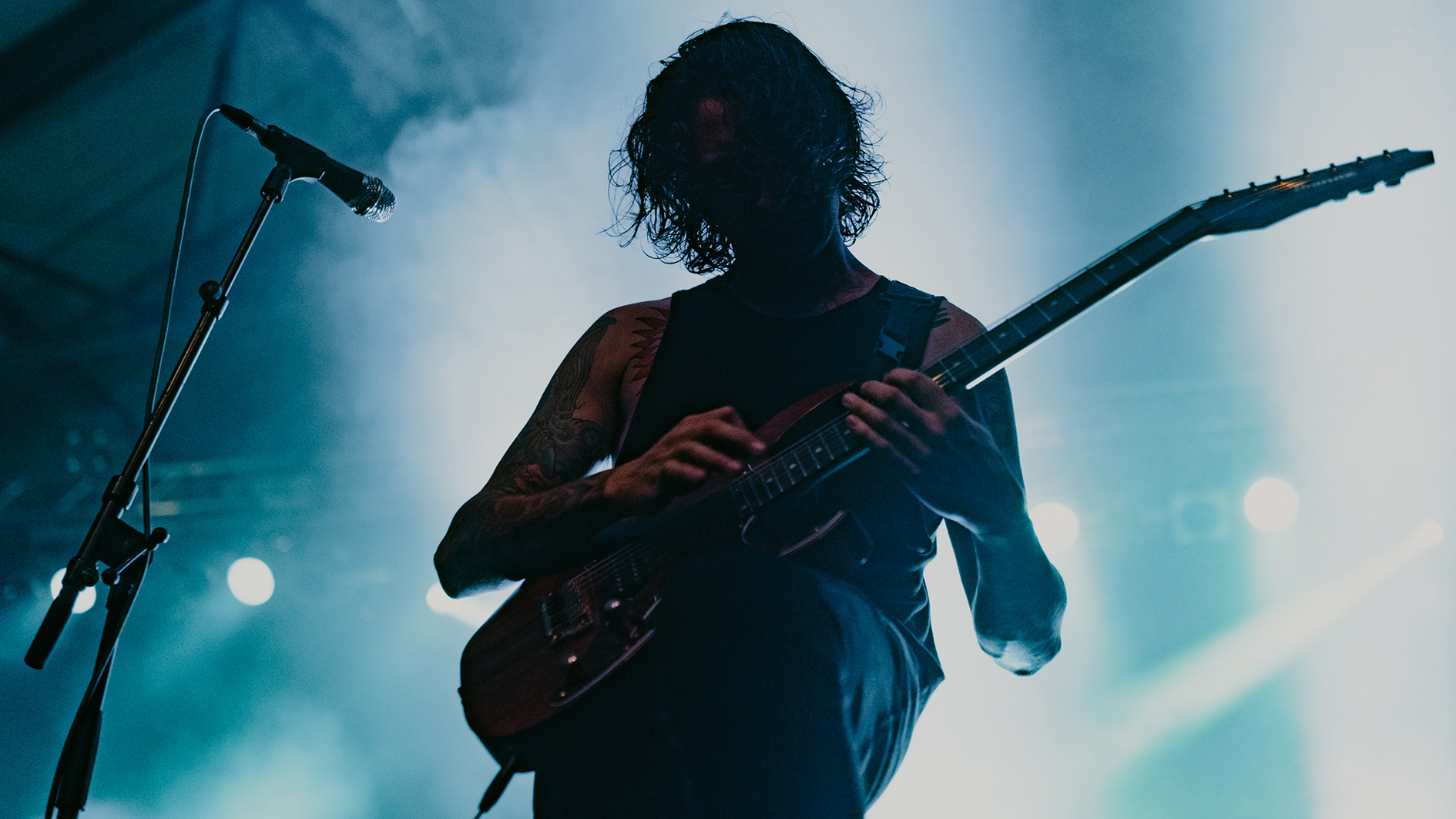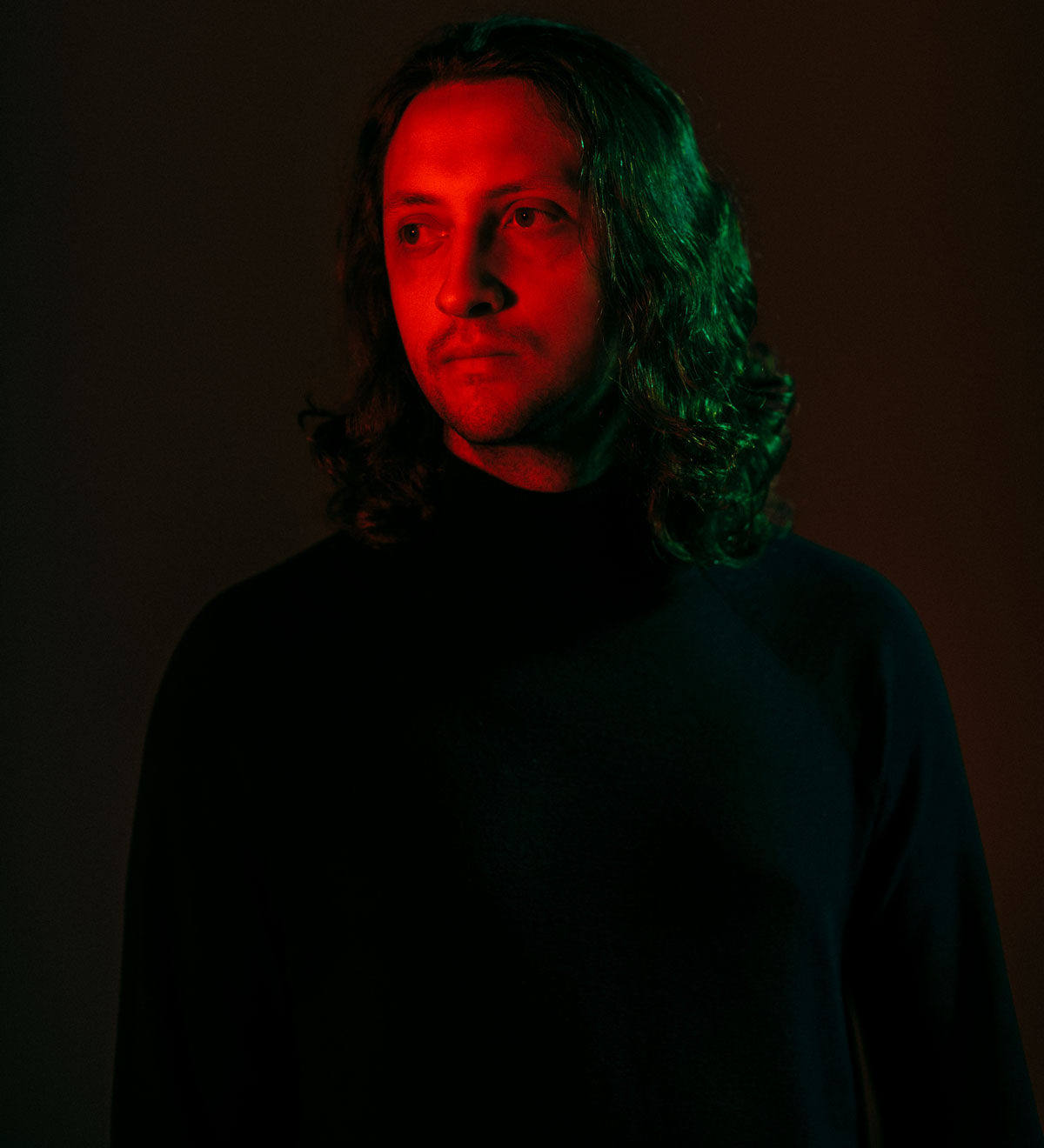
10 years since their debut album Impulse, and a smorgasbord of technically astounding riffs later, you might wonder whether ERRA have any territory left to explore. But with their self-titled fifth studio album, the Alabama quintet show – with a display of force – that they've barely scratched the surface.
From the intro of punishing opener Snowblood to the ambient textures of closer Memory Fiction, JT Cavey and co leave nothing off the table, deploying just about everything in their well-stocked creative arsenal.
“There are songs that simply serve to be brutal, others that serve to be beautiful, and others that fall somewhere in between,” explains guitarist Jesse Cash. Indeed, ERRA sees the band strike a delicate balance between utter metal savagery and thoughtful melodicism, and it's brilliantly executed throughout.
We caught up with Cash to get the lowdown on the gear and themes that fueled the record, the importance of layering and how he approaches the compositional process.
Technical guitar riffs have always been a key element of your sound. How did your approach to writing ERRA differ from your previous records?
“We still kept things technical for sure. It’s always been a fun challenge for us to maintain that while also trying to make things easy to follow along with. The thing about this record that I feel made it feel as different as it does was just trying to avoid writing with any pressure of expectation.

“It was fun to make, and I think that even though that’s a very simple answer, it’s probably the main reason the record turned out cool. It’s easy to muddy the waters of creativity when you’re looking at composition as a task or chore. It should be fun and freeing.”
Get The Pick Newsletter
All the latest guitar news, interviews, lessons, reviews, deals and more, direct to your inbox!
Talk us through the gear you used on this record.
“I honestly don’t have all the answers for that, which lends that much more credit to the talent of Carson Slovak and Grant McFarland for making it sound sonically as good as it does.
“All I really know is that the guitars were tracked on a Kemper, but that’s such a simplified answer to the nuanced process Carson goes through to find guitar tone. I know that in the end, he used a blend of a couple of different amps to make the guitar tone. I won’t even try to claim to understand his process. He’s a total wizard.
“Since moving across the country, I've only had my Ibanez RG752LWFX with me while we've been off tour. It has DiMarzio D-Activators in it. For my home setup, I've been using Neural DSP Fortin Cali Suite, Archetype: Plini, and Archetype: Gojira.
“In a live context, I have traditionally used Axe-Fx, but I'm not sure what I will be using when touring comes back. I like Kemper and Axe-Fx, and it's time for an upgrade, so I've yet to decide which direction I'll go there. I also use a DigiTech Drop tune pedal for this guitar. This guitar's scale length is only 25.5", which isn't ideal for F#, so i keep it set up in G# and pitch it down.”
Conceptually, this record takes listeners on a journey to Aokigahara, the infamous Suicide Forest of Japan… How did this concept come about?
“That’s actually a bit of a misconception that has come up lately. There isn’t a particular song or theme that relates to Aokigahara. There is just one lyric in the song Electric Twilight that mentions it.
“The way it came about was that I had one or two nights to write lyrics for the song before we tracked the vocals, and I was having a bit of a writer’s block. Sometimes I try out quirky methods to snap out of it when I’m in a time crunch like that, so I started tracing my palm lines with a pen.
“I looked at my palms kind of like Rorschach, trying to make out an image in the ink and I saw Mt. Fuji, which made me reminisce on going to Aokigahara in 2018, which is at the base of Mt. Fuji. The song is about psychedelic drugs, so I started musing on what the experience might feel like to do acid in the forest. That was enough to inspire some interesting lyrics and snap me out a block.”
Strings, electronics, and ambient guitar sounds are an excellent way to elevate sections and make melodies feel more emotionally affecting
Your sound often features a variety of electronic influences. Do you think metalcore will be more digitally influenced in the future?
“I can’t really say, I guess. I have no idea. I think for us, it’s less of a testament to the value of electronic additions and more of a testament to the value of layering in general.
“Strings, electronics, and ambient guitar sounds are an excellent way to elevate sections and make melodies feel more emotionally affecting. We use those layering tools as often as we can in a song. It’s the cherry on top of the milkshake, if you will.”
How did the Covid-19 pandemic affect the recording process of the album?
“Fortunately, the pandemic didn’t affect the process at all. We finished tracking the record the day before the state of emergency was declared, so we finished quite literally right on time.”
Jesse, you joined us for an episode of Sick Riffs earlier this year, and you showed us how to play the insane verse riff of Snowblood. How did you come up with that?
“Writing that song was one of those crazy days where I was just unusually inspired. I wrote the entirety of the guitars for the song over the course of a single 15-hour day, including the guitar solo. That is something that happens maybe once each record cycle.
“The last time I can recall it happening was in 2015 when I wrote Drift and Luminesce in a single day, but I can’t recall how much was added or reworked later. Snowblood I can confirm was just one-and-done in a day.
“I’m so proud of that song and I love having that story attached to it. It was literally one of the best days of my life, just feeling such an overwhelming flood of creative energy like that.
The album has its fair share of melodic moments, too. Was it a conscious decision going in to ensure the heaviness of the record was counterbalanced?
“Yeah, I would say so, for sure. Balance was an important aspiration for this record. We wanted it to flow in and out of different moods. There are songs that simply serve to be brutal, others that serve to be beautiful, and others that fall somewhere in between.”
With Covid restrictions looking like they’ll lift later this year – knock on wood – do you have any plans to tour?
“We’re not quite at the point of announcements, but yes, that is our hope. As soon as it is once again safe and permitted to play shows again, we are back.”
ERRA's new self-titled album is out now via UNFD.
Sam was Staff Writer at GuitarWorld.com from 2019 to 2023, and also created content for Total Guitar, Guitarist and Guitar Player. He has well over 15 years of guitar playing under his belt, as well as a degree in Music Technology (Mixing and Mastering). He's a metalhead through and through, but has a thorough appreciation for all genres of music. In his spare time, Sam creates point-of-view guitar lesson videos on YouTube under the name Sightline Guitar.
“It was tour, tour, tour. I had this moment where I was like, ‘What do I even want out of music?’”: Yvette Young’s fretboard wizardry was a wake-up call for modern guitar playing – but with her latest pivot, she’s making music to help emo kids go to sleep
“One of the guys said, ‘Joni, there’s this weird bass player in Florida, you’d probably like him’”: How Joni Mitchell formed an unlikely partnership with Jaco Pastorius










![John Mayer and Bob Weir [left] of Dead & Company photographed against a grey background. Mayer wears a blue overshirt and has his signature Silver Sky on his shoulder. Weir wears grey and a bolo tie.](https://cdn.mos.cms.futurecdn.net/C6niSAybzVCHoYcpJ8ZZgE.jpg)

![A black-and-white action shot of Sergeant Thunderhoof perform live: [from left] Mark Sayer, Dan Flitcroft, Jim Camp and Josh Gallop](https://cdn.mos.cms.futurecdn.net/am3UhJbsxAE239XRRZ8zC8.jpg)
